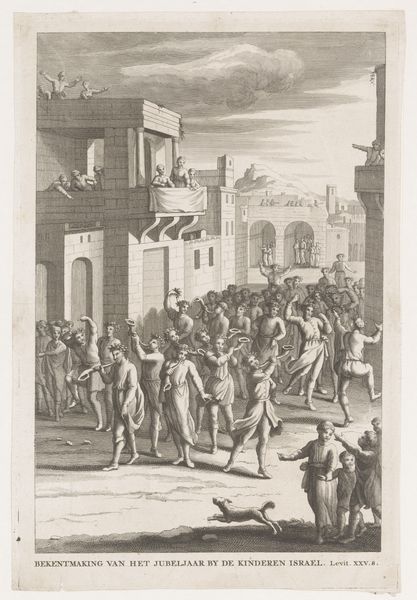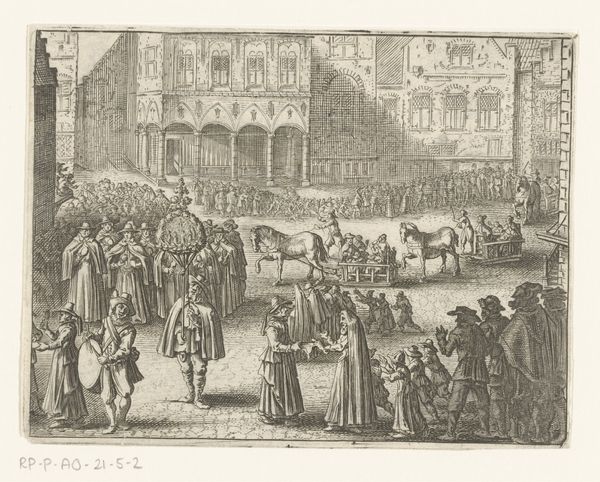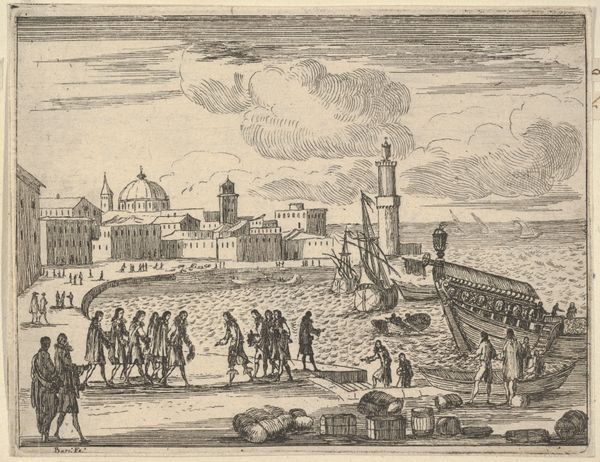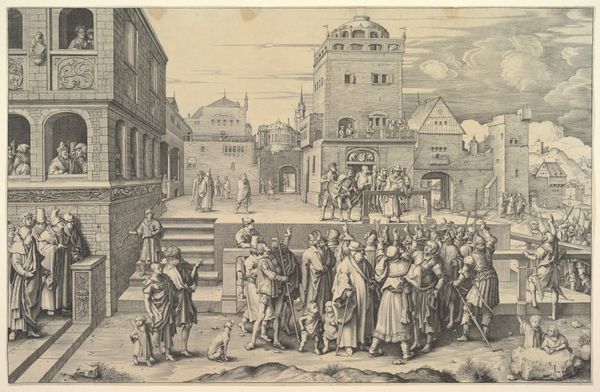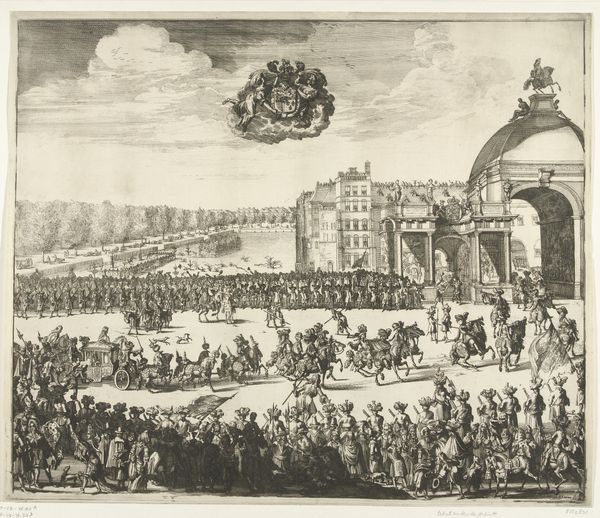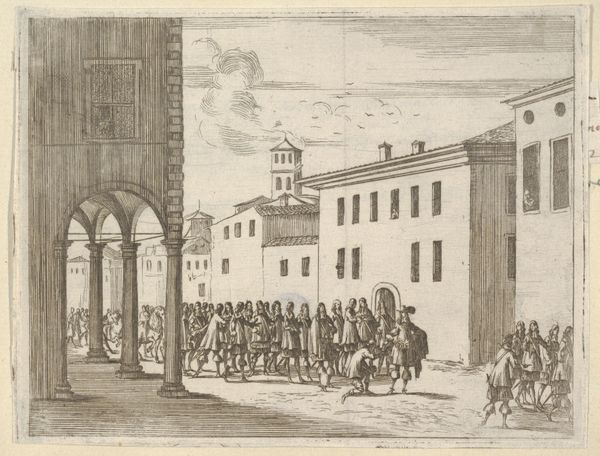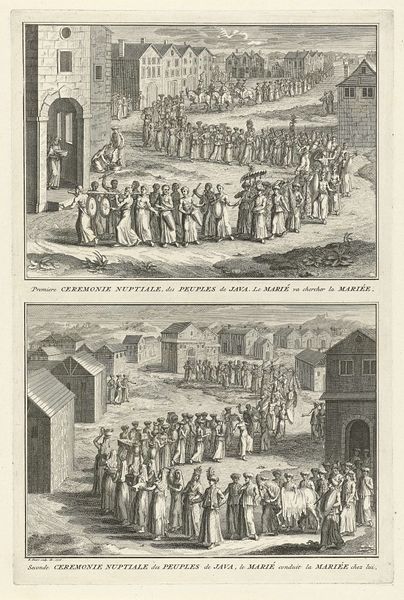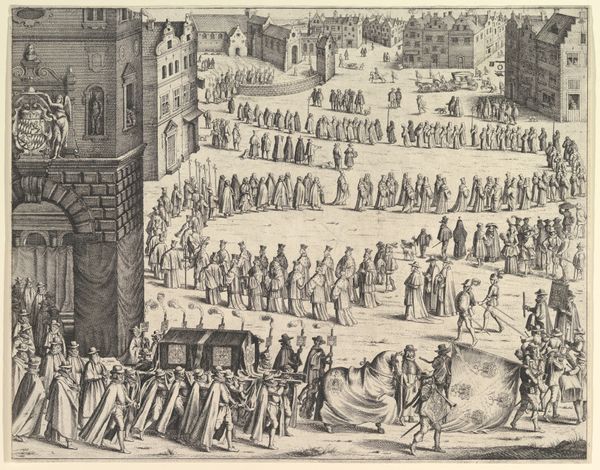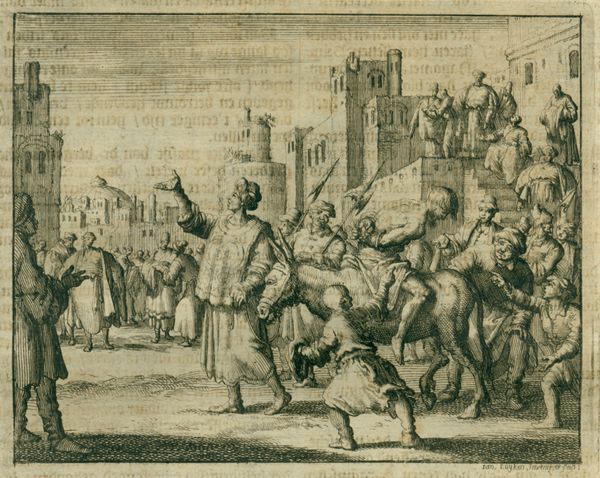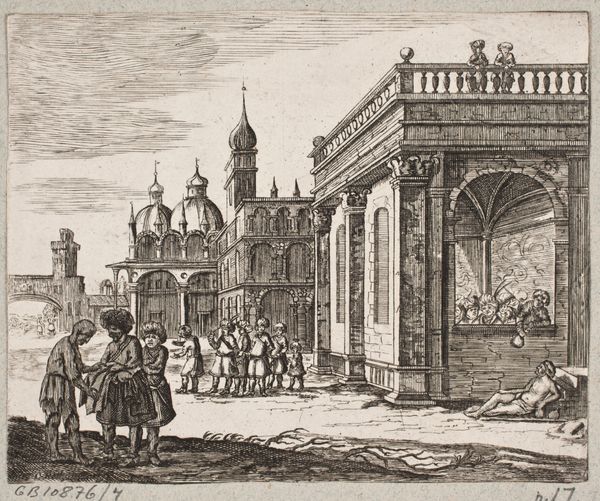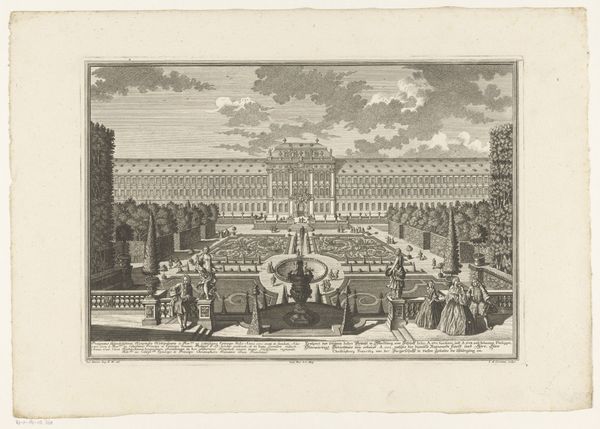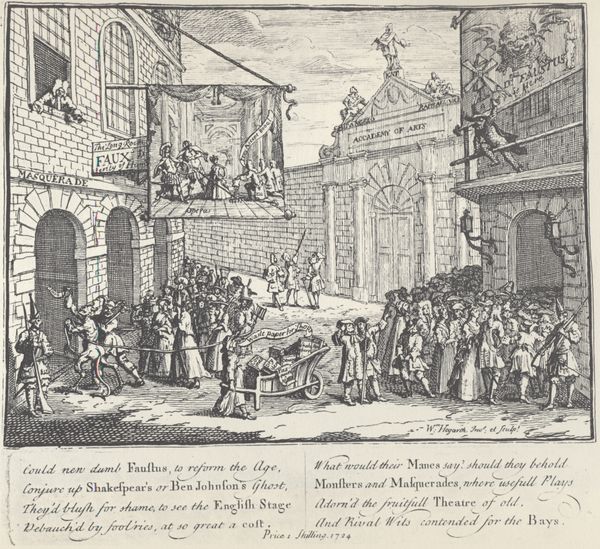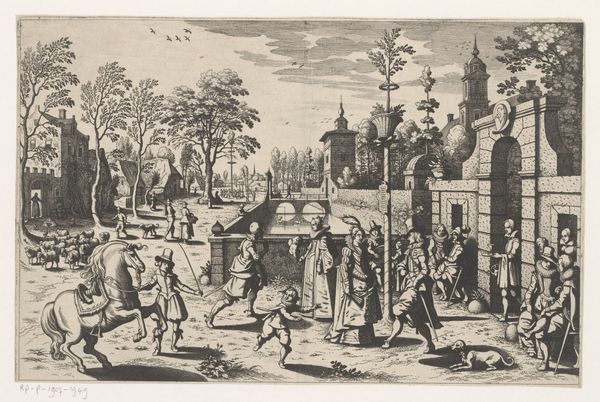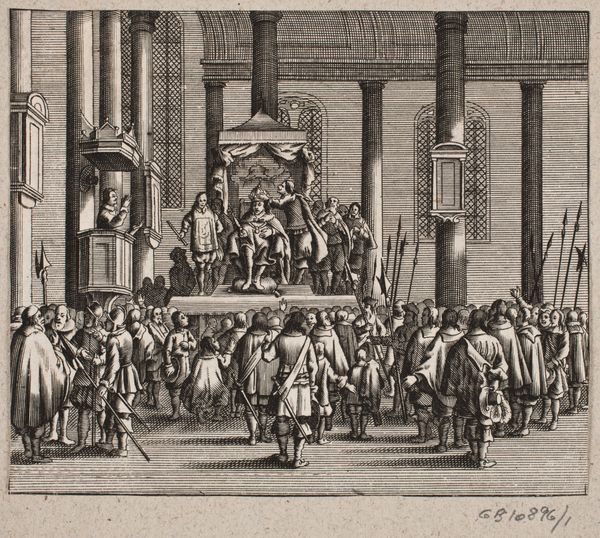
Procession through the Hippodrome, Constantinople (Aubry de La Mottraye's "Travels throughout Europe, Asia and into Part of Africa...," London, 1724, vol. I, plate 15) 1723 - 1724
0:00
0:00
drawing, print
#
drawing
# print
#
landscape
#
cityscape
#
genre-painting
#
history-painting
#
building
Dimensions: sheet: 9 13/16 x 13 7/16 in. (24.9 x 34.1 cm)
Copyright: Public Domain
Curator: Looking at this print by William Hogarth, created between 1723 and 1724 and entitled, "Procession through the Hippodrome, Constantinople," one immediately senses a very deliberate sense of observation. What are your first thoughts on this cityscape, Editor? Editor: It feels so...ordered. Stark, even. The sharp lines of the buildings and the obelisk create this rather imposing grid against which the procession moves, and the shadows make me uneasy. It feels staged, constructed for a purpose beyond just documenting a scene. Curator: I think that impression resonates. This piece, appearing as a plate in Aubry de La Mottraye's "Travels," had a specific function in relation to travel and its consumption during that period. It would've been reproduced using engraving techniques, impacting both cost and dissemination across Europe. I wonder what this print signified, and how accessible its form was to a broader public at the time. Editor: Definitely, who gets to participate in the culture conveyed through these travels matters! And where do power dynamics and Orientalism seep in, as a Westerner creates a representation of the Ottoman world? The way those figures are positioned almost feels illustrative, dehumanized, serving the architecture. Curator: Yes, and to really drill down into that process—engraving involved highly skilled labor, demanding years of apprenticeship to master the various tools and techniques. Think about the hierarchy within the workshop, who controlled the aesthetic choices and ultimately, the labor value embedded in the work. We can think about those who directly benefited versus those represented. Editor: The composition feels consciously laid out, and its clear delineation creates such a strong sense of difference and the power of that kind of observation and reportage. It reminds me that travel narratives and their illustrations construct particular narratives that serve specific ideological purposes. Curator: Right! Examining it in this context allows us to understand Hogarth's work beyond just aesthetics, it exposes the art production systems of the era. It raises issues around commodification, cultural exchange, and artistic representation. Editor: Seeing those layered implications transforms this image; it's a great reminder of how historical context changes what and how we see.
Comments
No comments
Be the first to comment and join the conversation on the ultimate creative platform.
